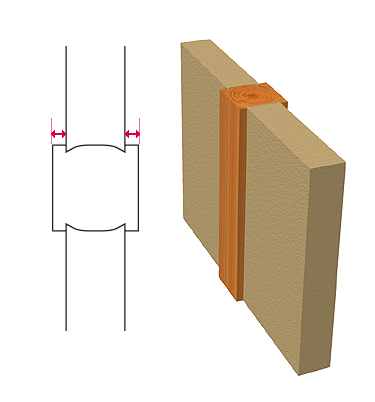|
||
 |
||

(C)2001 Japanese Architecture and Art Net Users System. No reproduction or republication without written permission.
掲載のテキスト・写真・イラストなど、全てのコンテンツの無断複製・転載を禁じます。
|
||||||
| chiri 散 | ||||||
| KEY WORD : architecture / general terms | ||||||
| A generic term used to express the distance between two flat, adjacent surfaces, between the surface of a wall and a post for instance. If two surfaces are slightly unevenly placed, chiri means the difference in height between them. Another example is if the ground sill *dodai 土台 extends out from the surface of a post; that distance is also called chiri. A further example can be found on a common style of gate called *heijuumon 塀重門 which has paneled doors that are ornamented with double diagonally placed thin strips of wood. Surrounding these panels are narrow wooden members placed in a grid pattern *igeta 井桁, inserted into the door frames. A tiny margin of space between them and surface of the frames is called chiri. Where a wall surface and posts come together the posts generally extend from 1.0cm to 1.5cm out from the wall surface. This small difference is also called chiri. | ||||||
 |
||||||
| REFERENCES: | ||||||
| EXTERNAL LINKS: | ||||||
| NOTES: | ||||||
(C)2001 Japanese Architecture and Art Net Users System. No reproduction or republication without written permission. 掲載のテキスト・写真・イラストなど、全てのコンテンツの無断複製・転載を禁じます。 |
||||||